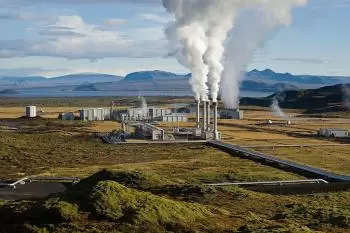
The uses of geothermal energy are classified into:
-
District heating systems and direct use.
-
Heating and cooling systems. This application is about harnessing the heat from the Earth's interior directly as thermal energy.
-
To produce electrical energy in geothermal plants.
When using geothermal resources, a distinction is made between two different types of geothermal: direct use and indirect use. Direct use means using the heat itself.
What is geothermal energy?
Geothermal energy is a type of renewable energy. It uses the heat of the subsoil to heat for both heating and cooling. Nowadays, this source of energy is an inexhaustible, clean, and environmentally friendly resource.
Different from fossil fuels such as natural gas, it doesn’t contribute to increasing global warming.
Geothermal is based on the difference in temperature that exists between the interior of the earth and its surface. Therefore it is available 24 hours a day, 365 days a year.
The simplest and most precise definition of Geothermal Energy would be the energy stored in the form of heat under the earth's crust. The geothermal energy of the Earth's crust originates from the original formation of the planet and from radioactive decay of materials.
Different types of geothermal energy can be distinguished based on the temperature at which the earth's crust is found.
Low and very low-temperature geothermal energy (between 17º and 90º). It is based on the thermal stability of the ground at depths greater than 20 m., Close to 17º. Its heat content is insufficient to produce electrical energy. However, this type of low-temperature energy can be used to heat a building and obtain sanitary hot water.
There is also geothermal medium and high temperature (between 90º and more than 150º). It is only possible in areas of the planet with special conditions of tectonic activity. In these places, the high temperature of the rocks and the water in the aquifers is used to obtain electricity through the use of combined cycles.
District heating systems and direct use of geothermal energy
District heating and direct use systems use hot water from springs or reservoirs located near the surface of the earth.
Research has shown that geothermal energy has been used in North America for many thousands of years. The first documented commercial use was in 1830 in Arkansas, United States.
Ancient Roman, Chinese, and Native American cultures used hot springs for bathing, cooking, and warming. Today, many hot springs are still used for bathing
The first applications of geothermal energy can be found in the baths of the Roman Empire, the Middle Kingdom of the Chinese, and the Ottomans for the construction of spas.
Geothermal reservoirs also serve to directly heat buildings with district heating systems. Using this renewable energy source avoids the emission of CO2 and other greenhouse gases.
Heating and cooling using geothermal heat
One of the uses of geothermal energy is geothermal heat pumps. These heat pumps allow the heating and cooling of buildings, as well as for the preparation of domestic hot water.
For most applications, high temperatures are not required. Often the required temperatures can be directly available. If this is not enough, the temperature can be raised with heat pumps, as is often the case with near-surface geothermal energy.
Natural air conditioning
Another use of this type of energy is natural cooling.
In natural cooling, water with flat surface temperature is used directly to cool the building (without the use of a heat pump).
The surface temperature is the average annual temperature of the site. Therefore, in summer geothermal fluid temperature is lower than the ambient temperature.
Maintenance of civil works
Another direct application is to avoid the freezing of bridges, roads, or airports. This includes laying water pipes without frost.
Thermal waters
For the use of heat in hot springs from geothermal energy, deep waters with temperatures between 40 and 150 ° C are used.
Thermal water is generally brought to the surface from a depth of 1,000 to 4,500 meters through a well. The water transfers most of its thermal energy through a heat exchanger to a second circuit of the "secondary" heating network.
Then, It is cooled and pressed through a second hole with a pump into the ground. It is into the layer from which it was extracted.
Electric power generation and geothermal plants
Geothermal electricity generation requires high-temperature water or steam. Geothermal power plants are generally built where geothermal reservoirs are located.
The largest geothermal district heating system is in Reykjavik where 197,404 people are served with an installed capacity of 1,264 MWt and peak load of 924 MWt.
Hydrothermal energy
A hydrothermal spring is a crack or fumarole on the surface from which hot water of geothermal origin flows.
In hydrothermal power generation, water temperatures of at least 80ºC are needed. Hot, dry steam hydrothermal reservoirs with temperatures above 150 degrees Celsius can be used directly to drive a steam turbine.
Summary
What is geothermal energy used for?
-
Electric power generation.
-
Heating and cooling systems.
-
To get heat.